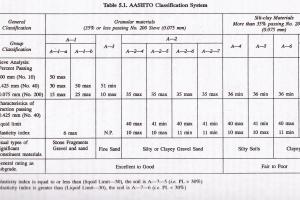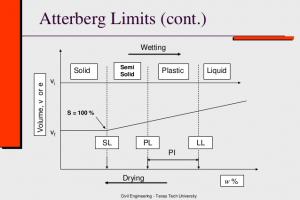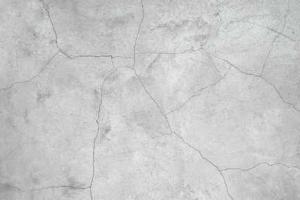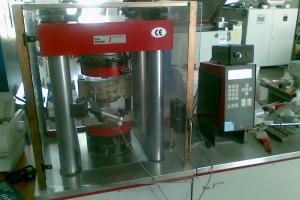Basic Paint Ingredients and Chemicals
For most of the paints the basic ingredients are:
- Solvent
- Binder
- Pigment
- Additives
1. Solvent / Diluent
It is a volatile liquid used to obtain desired viscosity and flow of the paint. It keeps the solid components of paint in suspension and also influences the adhesion properties of the surface. It is an optional component of paint i.e. some paints may not have solvent. The solvent after application of paint evaporates to leave a solid dry film on the surface. The most common solvents used in architectural paints are water and mineral spirits. Water is used in acrylic paints (both interior and exterior) while mineral spirits are used in oil based paints
2. Binder / Vehicle / Resin
It is one of the most important and necessary components of paint. The purpose of binder in paint is to impart adhesion to the layer as well as cohesion to the pigment particles. It binds the pigment particles together to from a cohesive layer after the evaporation of the solvent. It strongly influences other properties such as gloss, toughness, flexibility and durability. Linseed oil and poppy seed oil are two of the most common oils used as binders in paint. In solvent based paints the binder is usually an alkyd resin while in water based paints the binder is usually an acrylic emulsion but some vinyl emulsions are also used. The binder, or resin component is either dissolved in liquid solvent or dispersed in non-solvent. Paints that contain solid binder dissolved in a solvent and dry due to the evaporation of solvent are known as lacquers.
Types of Binders
Binders may be natural or synthetic. Binders can be of three types:
- Drying Oil
- Natural Resins
- Synthetic Resin
Drying Oils
Some of the oils are used as binders. The most common of these oils are
- Linseed Oil
- Poppy Seed Oil
- Soybean Oil
- Tung Oil
- Olive Oil
Natural Resins
They are obtained either from living or fossilized remains. Some of the natural resins with slight addition of additives are;
- Kauri
- Damar
- Ester
- Lac
- Rubber
Synthetic Resins
- Epoxy
- Alkyd
- Acrylic
- Polyurethane
- Silicone
- Phenolic
3. Pigments and Fillers
Pigments are granular solids which impart paint its most important properties of color and opacity. The pigments used in paint are normally present as fine solid particles that are dispersed, but not soluble, in the binder and solvent. Majority of white paints use Titanium Dioxide as a pigment. Sometimes dyes are used instead of pigments or in combination with pigments to impart color to the paint Fillers are a special type of pigment that is used to thicken the film, support its structure and increase the volume of the paint. Fillers are usually cheap and used to reduce the cost of paint. They are inert materials, such as clay, lime, talc etc.
Differences between Pigment & Dye
A pigment is a coloring material, usually in the form of an insoluble powder that is mixed with oil, water, etc. to make paint. While dye is soluble in water and is used to color cloth and other porous materials.
Types of Pigments
Natural Pigments include various;
- Clays
- Calcium Carbonate
- Mica
- Silica
- Talc
Synthetics Pigments include engineered molecules of;
- Calcined Clays
- Blanc Fixe
- Precipitated Calcium Carbonate
- Synthetic Pyrogenic Silicas
4. Additives:
Additives are the special components of paint and are used in small quantities to impart additional characteristics to the paint. The purpose of using additives is to;
- Improve the production and storing properties
- Reduce the drag of the paint
- Make the paint flow on a surface
- Add texture to the paint
- Enhance the adhesive characteristics for special surfaces
- Give pleasant odor in case of interior painting
- Provide water proofing characteristics
3. Pigments and Fillers
Pigments are granular solids which impart paint its most important properties of color and opacity. The pigments used in paint are normally present as fine solid particles that are dispersed, but not soluble, in the binder and solvent. Majority of white paints use Titanium Dioxide as a pigment. Sometimes dyes are used instead of pigments or in combination with pigments to impart color to the paint Fillers are a special type of pigment that is used to thicken the film, support its structure and increase the volume of the paint. Fillers are usually cheap and used to reduce the cost of paint. They are inert materials, such as clay, lime, talc etc.
Differences between Pigment & Dye
A pigment is a coloring material, usually in the form of an insoluble powder that is mixed with oil, water, etc. to make paint. While dye is soluble in water and is used to color cloth and other porous materials.
Types of Pigments
Natural Pigments include various;
- Clays
- Calcium Carbonate
- Mica
- Silica
- Talc
Synthetics Pigments include engineered molecules of;
- Calcined Clays
- Blanc Fixe
- Precipitated Calcium Carbonate
- Synthetic Pyrogenic Silicas
4. Additives:
Additives are the special components of paint and are used in small quantities to impart additional characteristics to the paint. The purpose of using additives is to;
- Improve the production and storing properties
- Reduce the drag of the paint
- Make the paint flow on a surface
- Add texture to the paint
- Enhance the adhesive characteristics for special surfaces
- Give pleasant odor in case of interior painting
- Provide water proofing characteristics
Common Types of Additives
Drying/Curing Agents:
Used to improve and control the drying properties of the paint film
Stabilizers:
Used to improve long term storage properties of the liquid paint
Anti-Mold Agents:
These agents are used to reduce mold growth on the paint film in very damp and humid environments
Wetting & Dispersing Additives:
They used to keep the pigment particles wet and dispersed to the degree of fineness required
Anti-settling Agents:
These are used to reduce settling of pigment particles during storage
Anti-skinning Agents:
These are used to prevent the formation of a tough skin film over the paint surface during storage












